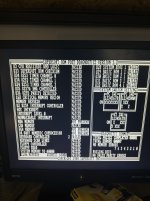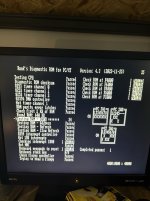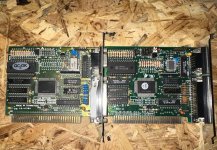modem7
10k Member
I have released a new version of Ruud's Diagnostic ROM. It is now at version 4.2
Available at minuszerodegrees.net
Enhancement #1:
Most (not all) checkpoints are sent to the serial port at 3F8h. More information about that is at [here].
Enhancement #2:
If a RAM test fails, the shown breakdown of failing bits now has the following to the right: "<----- May or may not be RAM chips."
Removing something that was misleading
Now, if a RAM test fails, the parity bit is not shown unless the parity bit is determined to be at fault.
( That determination can only be made when all data bits are functional. )
Available at minuszerodegrees.net
Enhancement #1:
Most (not all) checkpoints are sent to the serial port at 3F8h. More information about that is at [here].
Enhancement #2:
If a RAM test fails, the shown breakdown of failing bits now has the following to the right: "<----- May or may not be RAM chips."
Removing something that was misleading
Now, if a RAM test fails, the parity bit is not shown unless the parity bit is determined to be at fault.
( That determination can only be made when all data bits are functional. )




